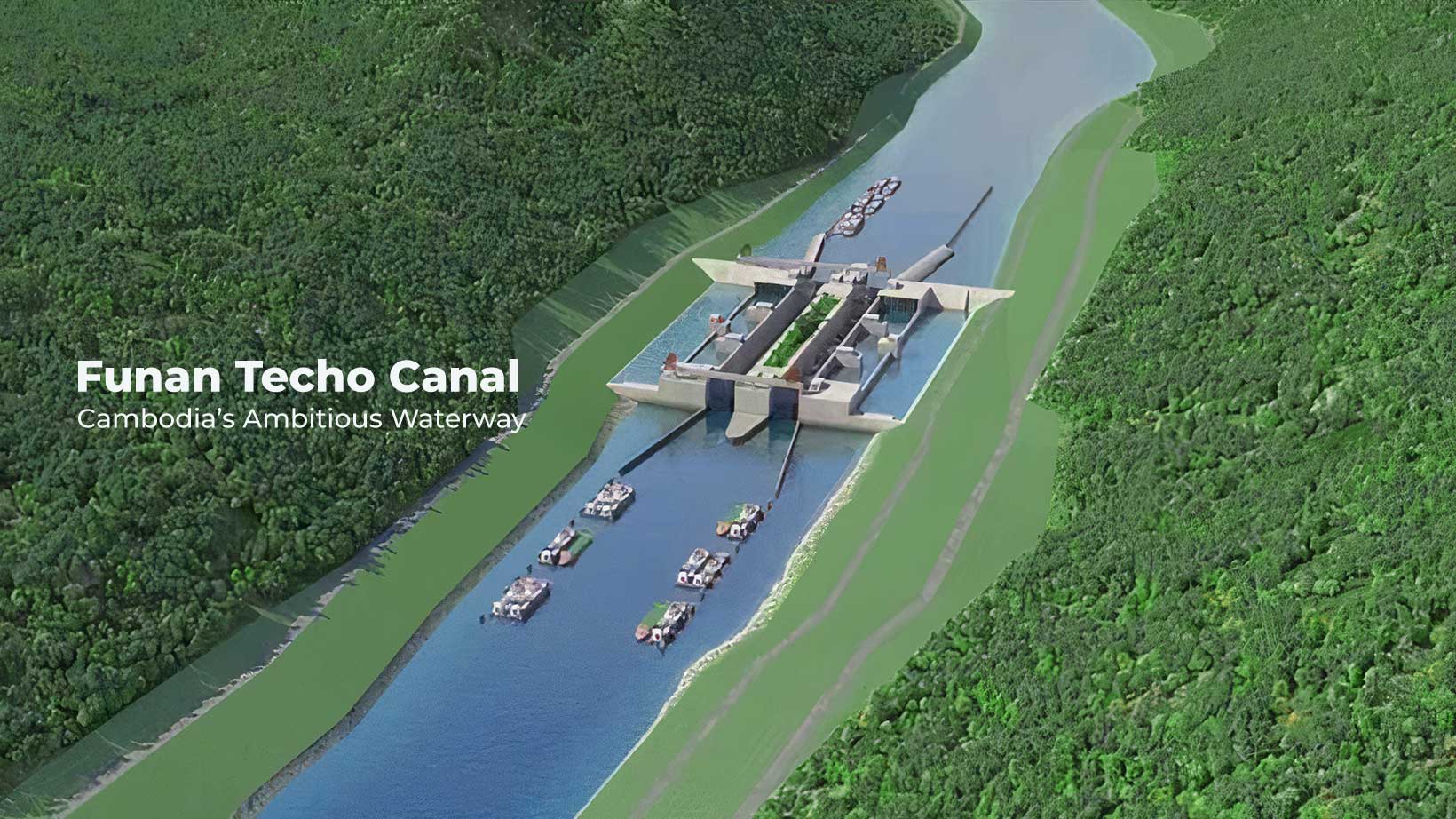Phnom Penh, Cambodia | On Monday, August 5, 2024, Prime Minister Hun Manet inaugurated a project that promises to reshape Cambodia’s landscape and elevate its economy—the Funan Techo Canal. This ambitious 180-kilometer waterway will connect the mighty Mekong River to Cambodia’s coast, spanning the provinces of Kandal, Takeo, Kampot, and Kep. The launch, highlighted by celebratory music, a dazzling display of lights, and the release of colorful balloons, signifies the dawn of a new chapter in Cambodia’s infrastructure and economic growth.
The groundbreaking ceremony of the $1.7 billion Funan Techo Canal in Kandal province on August 5, 2024. (Credit: Image from CamboJA/Pring Samrang)
A Monument to the Past, A Vision for the Future
The canal is more than just a transportation route; it is a symbol of Cambodia’s growing ambitions. As Prime Minister Hun Manet remarked at the launch, “The Funan Techo Canal is not just a waterway but a living monument symbolizing the historical significance and greatness of the former Funan Empire.” Named after the ancient Funan Empire, this project is a nod to the historical greatness of the region, while also serving as a beacon for the nation’s future. With an estimated construction cost of $1.7 billion and a projected completion date in 2028, the Funan Techo Canal is poised to become a central artery for trade and logistics in the Mekong sub-region.
Economic Lifeline: Cutting Costs and Creating Benefits
When operational, the Funan Techo Canal will provide a direct link between Phnom Penh and the Gulf of Thailand, drastically reducing Cambodia’s reliance on neighboring countries for shipping. According to the East Asia Forum, this new route is expected to reduce shipping through Vietnam by 70 percent, saving significant time and resources. By 2050, the canal could generate as much as $88 million annually from transportation alone, offering a substantial boost to the national economy.
Prime Minister Hun Manet emphasized this impact, stating, “This canal will greatly benefit our economy and improve the standards of living for our people when it becomes operational in 2028.” The benefits of the canal extend beyond logistics. Analysts predict that the project will play a crucial role in promoting Cambodia’s economic development by facilitating the transport of goods and providing other advantages. At least 1.6 million people living along the canal are expected to benefit directly from this transformative project.
Enhancing Infrastructure: Flood Control and Agricultural Support

The Funan Techo Canal will also bring significant improvements to water resource management. According to news from the Ministry of Tourism, some of the key benefits include enhanced flood control measures and better water conservation. These advancements are expected to mitigate the impact of flooding—a persistent issue in many Cambodian communities. Additionally, the canal will support the agricultural sector by providing a more reliable and efficient water supply, which will boost crop yields and contribute to food security across the nation. These benefits reflect just a portion of the canal’s positive impact on Cambodia’s infrastructure and economy.
A National Endeavor: Phased Construction and Investment
The canal’s construction will be carried out in two phases. The first 21-kilometer section, connecting Prek Takeo to the Bassac River, will be funded entirely by domestic resources—a testament to Cambodia’s commitment to self-reliance. The second section, stretching over 130 kilometers from Koh Thom to Kep province, will be developed as a build-operate-transfer project, with significant investment from both the China Road and Bridge Corporation (CRBC) and a Cambodian firm. Importantly, Cambodian companies and state-owned enterprises will hold the majority stake, with Prime Minister Hun Manet asserting, “Cambodian companies and state-owned enterprises are the majority holders here. Sovereignty cannot be lost here.”
A Pathway to Prosperity
As Cambodia continues to develop, the Funan Techo Canal stands as a monumental project, reflecting the country’s aspirations to become a major logistics and economic hub. By enhancing infrastraucture, improving logistics, and driving economic growth, the canal will play a critical role in shaping Cambodia’s future. It is not just a waterway—it is a pathway to prosperity, symbolizing the nation’s enduring strength and vision.


